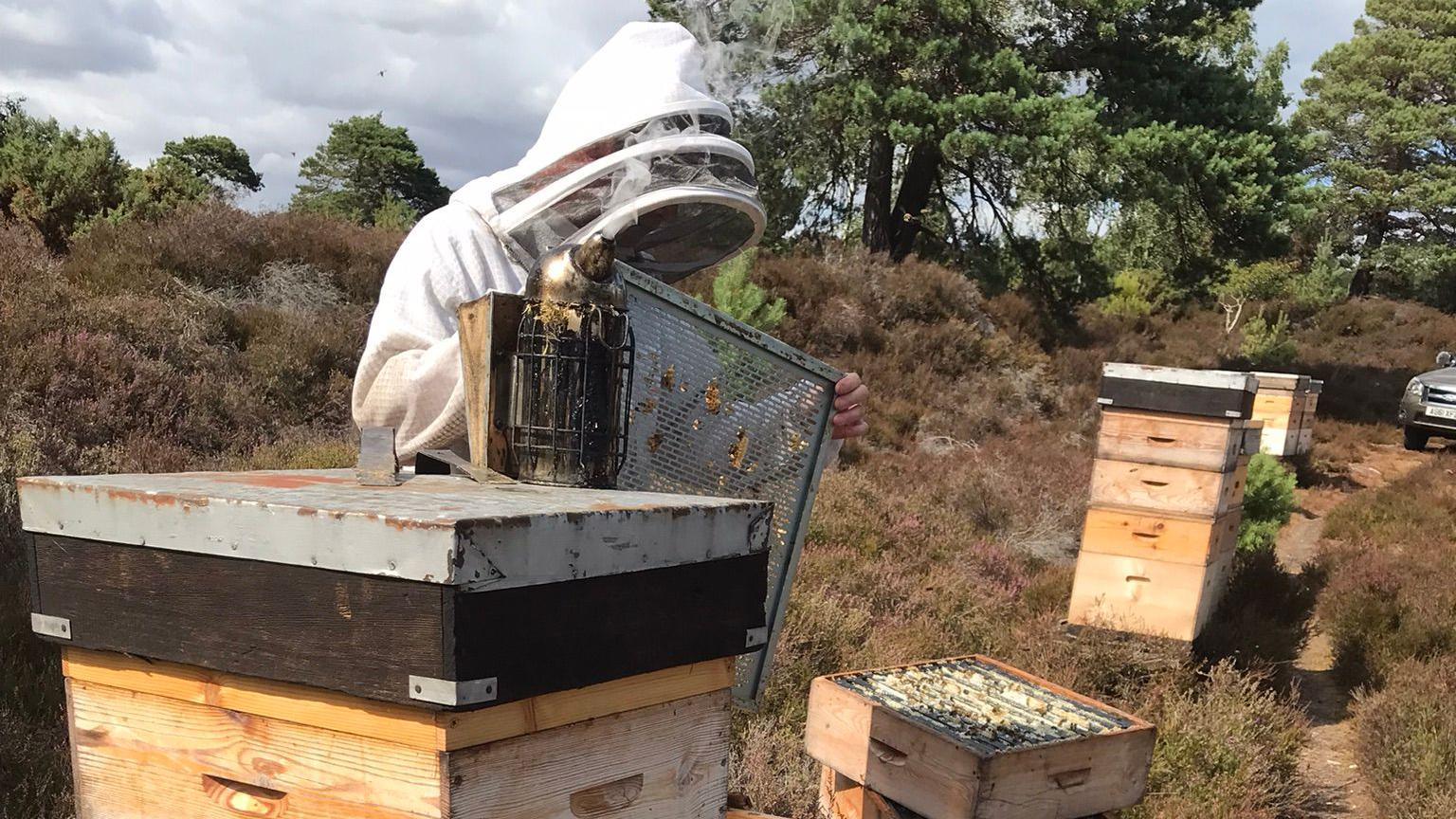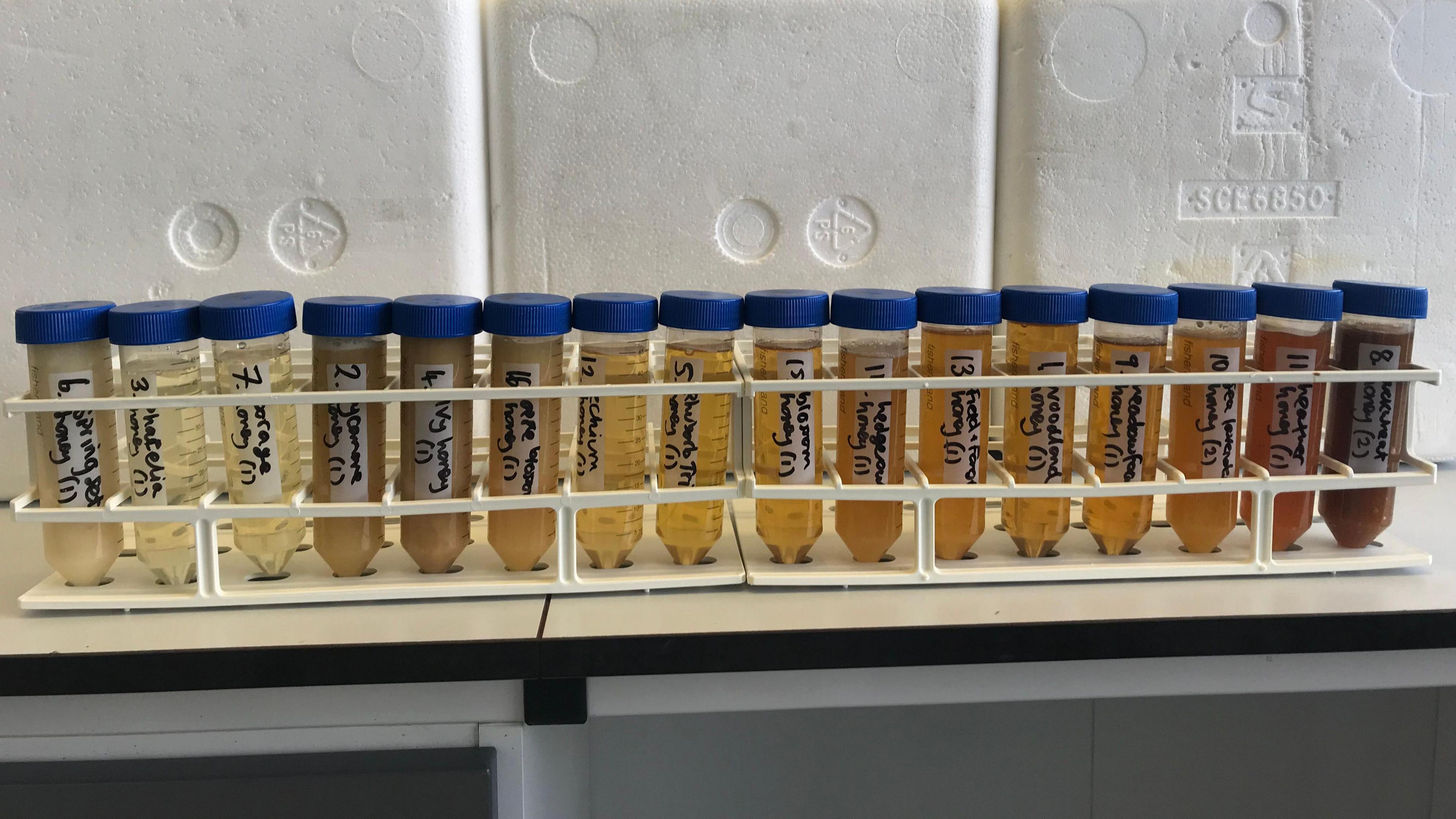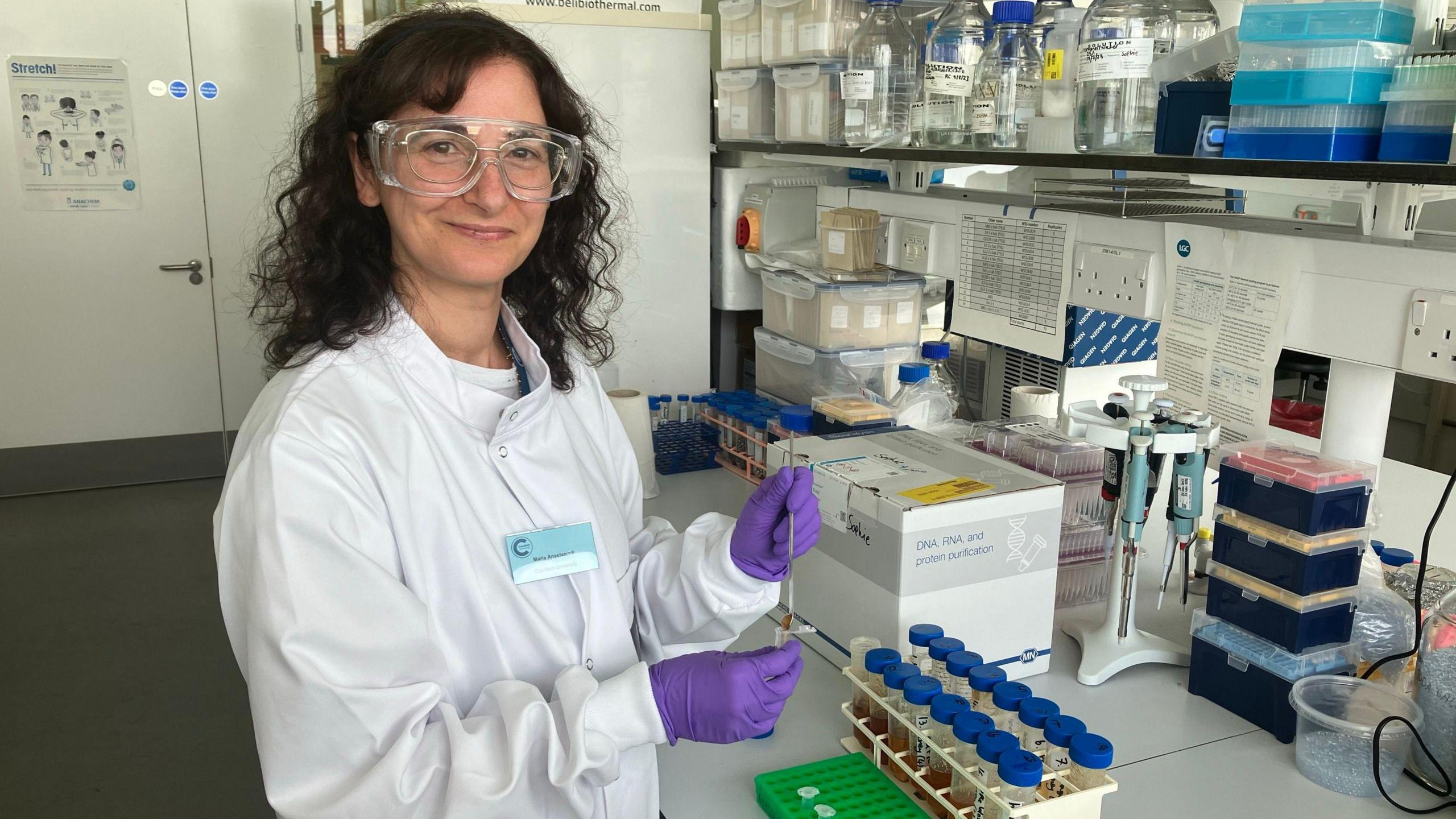How to detect fake honey without opening the jar

Scientists at Cranfield have found two methods of detecting fake honey
- Published
Scientists said they have found a way to detect fake honey products without opening the jar.
Researchers at Cranfield University, Bedfordshire, claim to have successfully tested two new methods to authenticate UK honey quickly and accurately.
Dr Maria Anastasiadi, the project's lead scientist, said she hoped the breakthrough would "take the sting out of honey fraud".
It could help "protect consumers and verify supply chains", she added.
The project was led by Dr Anastasiadi, lecturer in Bioinformatics at Cranfield University, in collaboration with the Food Standards Agency and the UK’s Science and Technology Facilities Council.
It used a specialist light analysis technique to detect fake honey without opening the jar.

A variety of samples were used to in the tests
Dr Anastasiadi said: "This method is an effective, quick tool to identify suspicious samples of honey, helping the industry to protect consumers and verify supply chains."
Samples spiked with rice and sugar beet syrups were tested using the non-invasive Spatial Offset Raman Spectroscopy method more commonly used in pharmaceutical and security diagnostics.
Scientists said this proved highly accurate in detecting sugar syrups and that it was portable and easy to implement, making it an ideal screening tool for testing honey along the supply chain.

Dr Maria Anastasiadi from Cranfield University said she hopes this "takes the sting out of honey fraud"
In 2023, almost £90m of honey was imported into the UK.
But it can be vulnerable to fakery when syrups are used to dilute it, scientists say.
Last year a report from the European Commission found that nearly half of 147 samples tested were likely to have been tampered with, the university said.
Authentification methods could be costly and time consuming, and it could also be very difficult to detect tainted products, it added.
In a second study, DNA barcoding, a method already used in food authentication, was used to successfully detect very small levels of rice and corn syrups.
Dr Anastasiadi said: "To date, DNA hasn’t been widely used to examine honey authenticity but our study showed this is a sensitive, reliable and robust way to detect adulteration and confirm the origins of syrups."
"Having this consistent technique in the testing armoury could take the sting out of honey fraud," she added.
Get in touch
Do you have a story suggestion for Beds, Herts & Bucks?
Follow Beds, Herts and Bucks news on BBC Sounds, Facebook, external, Instagram, external and X, external.
Related topics
You might also be interested in
- Published18 February 2024

- Published11 April 2023
